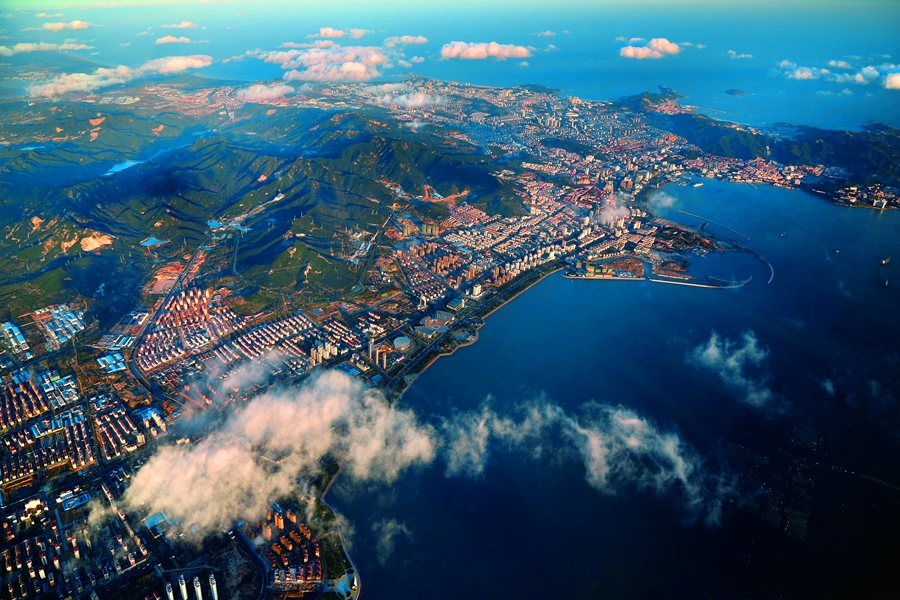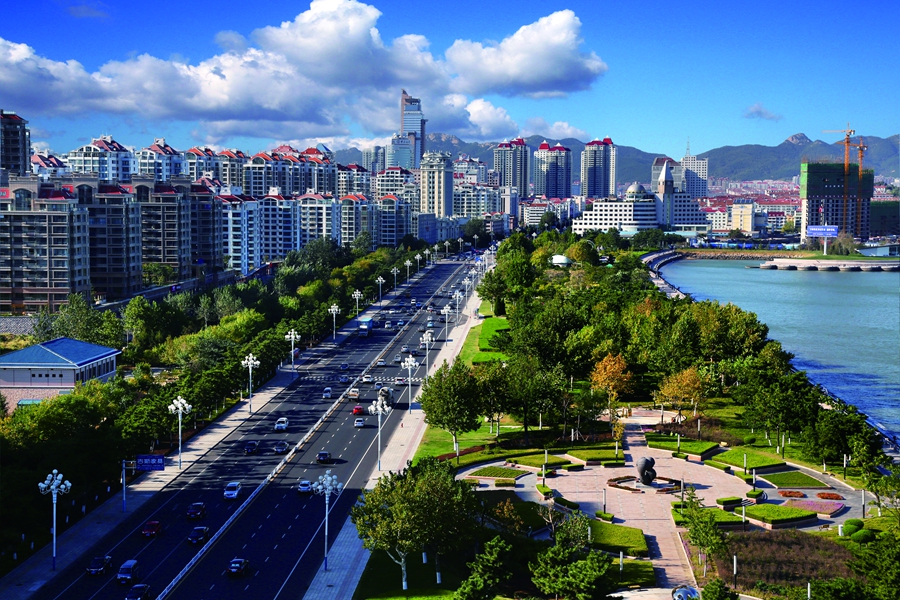Weihai
(chinadaily.com.cn)| Updated : 2024-03-04
Print Print
[Photo provided to chinadaily.com.cn]
Weihai, a picturesque city in the eastern tip of Shandong Peninsula, is located at 36°41′~37°35′N and 121°11′~122°42′E.
Bounded on three sides by the Yellow Sea, Weihai looks out to Liaodong Peninsula to the north, the Korean Peninsula to the east and the islands of Japan to the southeast. The total area is 5, 436 square kilometers, including 731 square kilometers of urban area. The coastline is 985.9 kilometers long.
The prefecture-level city of Weihai administers Huancui District, Wendeng District, Rongcheng City and Rushan City, and has three national development zones including the Weihai Torch Hi-tech Science Park, the Economic & Technological Development Zone and the International Port Economic and Technological Development District, with a total area of 5,797 kilometers.
As one of the open coastal cities, Weihai is a famous port and tourist city in China.
It is the first "National Sanitary City" and was included in one of the first groups of National Environmental Protection Model Cities. It numbers among the forty cities of Excellent Hard Investment Environment and is one of the fifty cites of strong comprehensive economic power. In May 2009, Weihai was titled "National Forest City". In 2003, it won a World Habitat Award for its outstanding contribution to improving habitats and city environments.

[Photo provided to chinadaily.com.cn]
Weihai's coastline is 1,000 kilometers, about one third of that of Shandong province as a whole.
The three fishing grounds along the coastline are rich in more than 300 sea foods, including prawns, sea cucumbers, abalone, shellfish, algae and a variety of cash fish.
The city possesses rich mineral resources. More than 30 have been discovered like gold, iron, copper and zinc.
Granite in Weihai is of large quantity and good quality, with "Shidao Red", "Wendeng White" and "Rushan Black" well-known at home and aboard.
Based on a solid industry foundation, a fairly complete manufacturing system has been formed in Weihai consisting of plastic, silk, medicine, food and artistic handicraft industries, with its backbone being sectors such as machinery, electronics, chemicals, building materials and textiles. There are more than 2,000 approved products, of which at least 700 have entered overseas markets.
Weihai is China's biggest producer of carpets, fishing rods and miniature woodworking machinery, its second biggest producer of wire and its principle production base of agricultural vehicles, automobiles, and connecting rods.
Radial wire, high speed facsimile devices, electronic telephones, terminal displays, high energy batteries, high efficiency electricity-saving lamps, marine biological harvests and juice concentrate have emerged as Weihai's leading products.

[Photo provided to chinadaily.com.cn]
Weihai is the grain production base of Shandong province and a key production area for peanuts, fruit and aquatic products. It ranks first in output of aquatic products in China.
Weihai belongs to the first group of Chinese foreign trading ports. It has maintained long and steady economic and trade ties with more than 100 countries and regions.
It also has great tourist resources. There are more than 80 places of interest such as the Liugongdao Memorial Places of the Jiawu War, "the end of the sky" which was visited by Qin Shihuang and Han Wudi, the birthplace of Quanzhen section of Taoism—Shengjing Mountain, a bucolic refuge—Shengshui Temple, Tieci Mountain, Fahua Temple in Chishan which is a symbol of the friendship of the Chinese, Japanese and Korean people and the biggest overwintering habitat of swans—Swan Lake. Weihai also offers four provincial holiday zones: Huancui, Yintan, Shidao Bay and Swan Lake.
